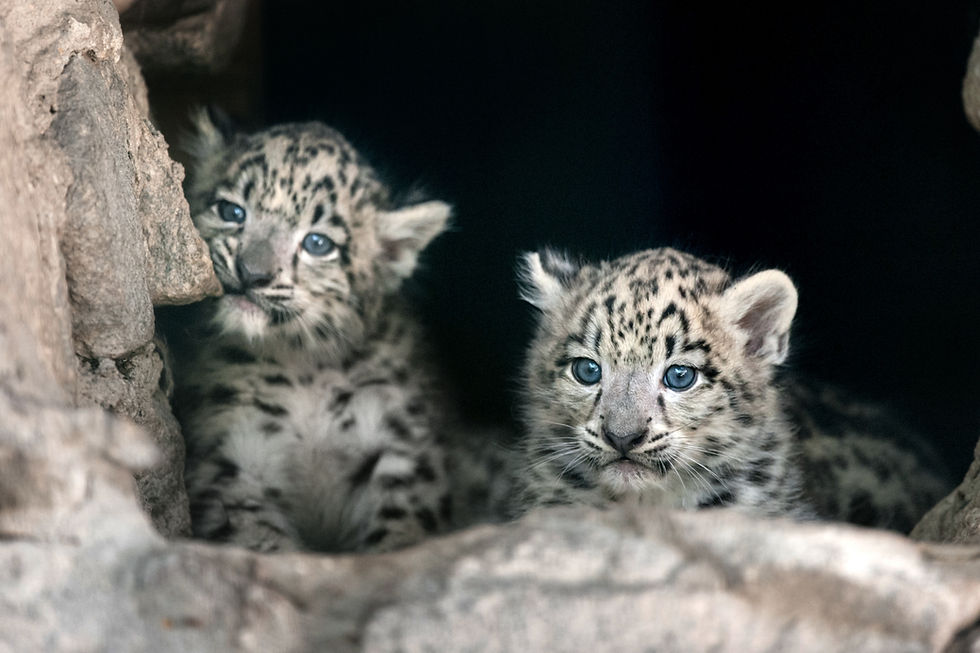The Race to Protect Florida’s Last Panthers
- Chipco Preserve

- Aug 25
- 4 min read
Maeve Kiley
UCFP489 and UCFP490
On August 10, the remains of two 3.5-month-old panther cubs were discovered in Collier County, Florida.
The female cubs, known to scientists as UCFP489 and UCFP490, were members of the Florida Fish and Wildlife Conservation Commission (FWC) rehabilitation program. At that age, they would have begun accompanying their mother on hunting forays and learning about their environment.

Cub 489 was found on the eastbound lanes near the Naples Heritage Golf & Country Club, while her sister, 490, was found on the westbound lanes near the entrance of Madison Park. Both neighborhoods are vast and ever-expanding, with Naples Heritage Gold & Country Club spreading across 550 acres of land and Madison Park reaching 696.5 acres. The roads connecting these neighborhoods are incredibly treacherous for wildlife, with automobile-related animal deaths occurring frequently.
The cubs’ final location was only a few miles northwest of Picayune Strand State Forest, where many rescued Florida panthers call home. The land is an excellent habitat for Florida panthers and one of the largest protected areas alongside the Florida Panther National Wildlife Refuge and the Big Cypress National Preserve.
The Picayune Strand State Forest was the cubs’ home during their short lives alongside the remaining 120-130 surviving Florida panthers in the wild. That number is expected to decrease if the threat of traffic and automobile congestion is not addressed and resolved.
The Dwindling Numbers
While Florida panther populations have dwindled, Floridian populations have increased exponentially. Since 2020, Florida’s population has reached 23.4 million with an estimated 8.25% increase.
With larger numbers come larger developments, as the demand for houses skyrockets. For example, Central Florida saw a 37% year-over-year increase in new home construction in Q1 2025. Many of these neighborhoods are gobbling up local wildlife, with an estimated 45,000 acres of land developed annually.
This news has been troubling for the local wildlife, particularly the Florida panther. These large cats vigorously defend their territory and naturally require large amounts of land—a minimum of 200 square miles—for hunting, socializing, raising their young, and searching for mates.
With their habitats shrinking, the panther population will dwindle, as they are forced into smaller and smaller patches of land. Their genetic health is also in jeopardy, with shrinking habitats resulting in more inbreeding. Many are exposed to toxins like mercury, which atmospheric deposition introduces to the Everglades ecosystem.
However, automobile accidents are among the Florida panthers’ most significant threats. In 2024, 29 of the total 36 Florida panthers killed were due to automobiles, with one struck by a train. This death toll was the highest since 2018.
This year, 12 Florida panther deaths have been reported, with all of them being automobile-related. UCFP489 and UCFP490 were two of these victims.
Protect the Panthers, Protect Florida
The Florida panther has an incredible place in Florida’s history, culture, and ecosystem.
Florida panthers are the apex predators of their ecosystem and balance the fragile system set in place. They manage prey populations and prevent overgrazing by hunting white-tailed deer, hogs, and other mammals. Without Florida panthers, these healthy ecosystems will fall into disrepair and exacerbate the already disastrous effects of climate change.
Florida panthers are also an important cultural symbol and influence. The Florida panther has traditionally held cultural and reverent value in the Seminole and Miccosukee cultures. Countless stories of the Florida panther. Both tribes have Panther Clans, with the panther being a symbol of strength, courage, connection, and heritage. The Seminole and Miccosukee Nations have fought tirelessly to protect the Florida panthers, and their efforts have aided in the Florida panthers’ continued survival.
The Florida panther is the state animal, the name of the state’s National Hockey League team, and a source of inspiration to all people. Its grace, regalness, and elusive nature have garnered the love and respect of thousands of people throughout history.
The Florida Panther Society, Florida Forever, The Nature Conservancy, and many others have advocated for more protected land and safer routes for Florida panthers to travel. To prevent automobile accidents, advocacy groups have proposed the construction of wildlife bridges and underpasses to protect animals who wish to travel.
To learn more about how to help, check out the Florida Wildlife Federation, The Nature Conservancy, and the Florida Panther Protection Program linked below. Donations, raising awareness, voting, and contacting government officials are essential to ensure the continued survival of Florida panthers and all animals threatened by development.
If you ever see an injured, ill, or deceased panther, contact the Florida Wildlife Alert Hotline at 888-404-FWCC (3922).
Florida Wildlife Federation: https://floridawildlifefederation.org/protecting-floridas-panthers/
The Nature Conservancy: https://www.nature.org/en-us/get-involved/how-to-help/animals-we-protect/florida-panther/
Florida Panther Protection: http://www.floridapantherprotection.com/
Works Cited
Acevedo, F. (2024, July 22). Protecting Florida’s Panthers • Florida Wildlife Federation. Florida Wildlife Federation. https://floridawildlifefederation.org/protecting-floridas-panthers/
Florida panther. National Wildlife Federation. (n.d.). https://www.nwf.org/Educational-Resources/Wildlife-Guide/Mammals/Florida-Panther
Florida Panther Protection Program. (n.d.). http://www.floridapantherprotection.com/
Florida panther facts and how we’re helping protect them. The Nature Conservancy. (n.d.). https://www.nature.org/en-us/get-involved/how-to-help/animals-we-protect/florida-panther/
Florida development. Florida Department of State. (n.d.). https://dos.fl.gov/florida-facts/florida-history/a-brief-history/florida-development/
History of state lands. Florida Department of Environmental Protection. (n.d.). https://floridadep.gov/lands/lands-director/content/history-state-lands
Palmer, A. (2024, January 8). 2023 closes as Record Year for conservation in Florida with 111K+ acres approved for conservation. Florida Wildlife Corridor Foundation. https://floridawildlifecorridor.org/total-acres-conserved-in-2023/
Press, A. (2024, July 23). Florida’s population passes 23 million for the first time due to residents moving from other states. WUSF. https://www.wusf.org/local-state/2024-07-23/florida-population-passes-23-million-first-time-residents-moving-other-states
Two Florida panther kittens killed in Collision. (n.d.-e). https://environmentamerica.org/updates/two-florida-panther-kittens-killed-in-collision/




Comments